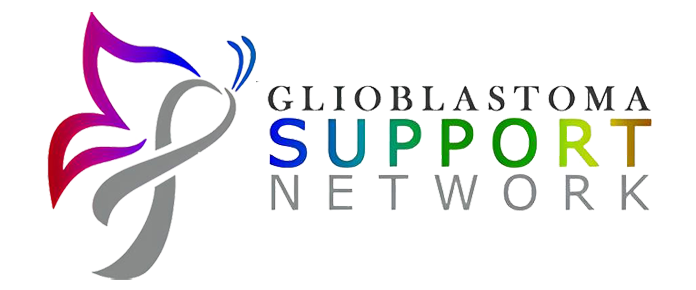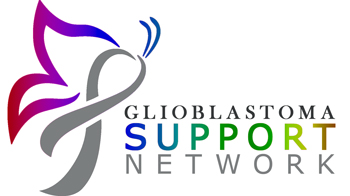A glioblastoma multiforme diagnosis can be overwhelming. If you are a caregiver, spouse, family member, friend, practitioner, patient, or someone who has been widowed by glioblastoma multiforme, you likely have a lot of questions. We’ve compiled a list of the most common questions our support community often hears. This information is not meant to be medical advice.
What is glioblastoma?
Glioblastoma, also known as glioblastoma multiforme, is an aggressive type of cancer that primarily occurs in the brain. Glioblastoma can affect those of any age, but it tends to occur more often in older adults. The median age of diagnosis is 64. Glioblastoma symptoms include worsening headaches, nausea, vomiting, and seizures. Glioblastoma is difficult to treat. Treatments such as surgery, radiation therapy, and chemotherapy may slow progression of the cancer and reduce signs and symptoms, but a cure is not presently available.
What are the long-term effects of glioblastoma?
The lasting effects of a brain tumor will vary from case to case, and it is best to discuss the long-term effects with your medical team. In general, the tumor and treatment may affect your hearing, cognition, vision, hormone levels, and even your oral health.
Where do I start if I need help?
We encourage all visitors to this site to start with our Resources and Support page. There you will find a great deal of information on how to navigate care, how to find a support community, information on support groups, resources for caregivers, and specific resources for those who have been widowed by glioblastoma.
What is the Glioblastoma Support Network?
The Glioblastoma Support Network is a 501c3 nonprofit organization dedicated to providing resources to caregivers of anyone suffering from an aggressive type of brain cancer known as glioblastoma multiforme.
How do I donate and support brain cancer awareness?
You can support us in our effort to find better treatments and breakthroughs for those afflicted with glioblastoma and related brain cancers on our Donate Today page. We provide guidance, information, and assistance to patients, caregivers, family, friends, and those widowed by glioblastoma multiforme, so your help is greatly appreciated.
What is a death doula?
A death doula provides non-medical care and guidance for patients and family members as they journey through the dying process. A death doula is familiar with the physical signs and symptoms that occur at the different stages of the dying process and can provide understanding as things progress. To learn more about the role of a death doula and how to find one near you, read our informative article.
How do I handle my finances after the loss of my spouse?
After the death of a spouse or a loved one in your care, you may be facing a long list of financial decisions that require clear thinking during a stress-filled time. It’s never an easy task, but organizing your financial documents and knowing what to expect can help make this process a bit simpler. You’ll need to find a number of important documents, organize your bills, and complete a number of financial tasks. We’ve written an article on how to get your finances in order. You can click here to read it.
What is hospice care and when should we consider it?
Hospice care is intended to provide support to those in the final phase of terminal illness. It focuses on the quality of life and comfort of the patient instead of treatment or cure. Hospice is also called end-of-life care as its main objective is to alleviate pain, allowing the patient to live the rest of his or her life as comfortably as possible. An appropriate time to start considering hospice care is when the patient has suffered significant declines with no signs of improvement. Generally speaking, a physician must diagnose terminal illness with less than six months to live before a patient can access hospice care. Click here to learn more about treatment with hospice.
Are there groups for the newly widowed?
When your spouse dies from glioblastoma, your world changes. You can find support through a number of organizations founded by other widowed people who understand the trauma, fear, confusion, and loneliness that begin the instant your spouse dies. The Glioblastoma Support Network has a page dedicated to Widow and Widower Resources. Additionally, Camp Widow and GriefShare can help you find a group nearby.
Where can caregivers find support?
The caregiver is often faced with many unknowns. The Glioblastoma Support Network has dedicated a section of our website specifically for Support of Caregivers, a place to learn about groups, organizations, and resources available to you. The resources outlined for caregivers include housing assistance near brain tumor centers, finding home health aides, special considerations for veterans and members of the military, palliative and hospice care advice, and a number of internet resources for patients and their families. There is also a page dedicated to self-care for the caregiver.
What is a glioblastoma Caregiver Kit?
Caregiver Kits from the Glioblastoma Support Network contain items caregivers are unaware they need until they are in the midst of battle. They help equip new caregivers with the support and tools they need to keep up the fight against glioblastoma. You can nominate a caregiver to receive a kit here, and you can also make a donation to support our caregiver kits on the same page.
Where can I find more information about the fight against glioblastoma?
The Glioblastoma Support Network website offers a number of resources, including information about how to get involved or volunteer, how to be a part of an online community for those fighting against glioblastoma, and how to sign up to receive a newsletter. One of the best places to find more information on all topics related to living with glioblastoma and caring for someone suffering from glioblastoma is our blog. Click here to visit the Glioblastoma Support Network blog.


